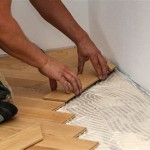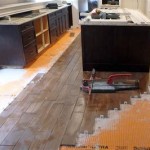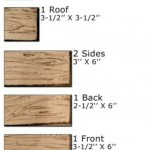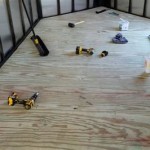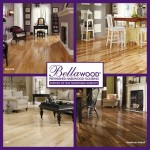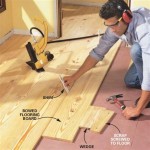```html
Bellawood Bamboo Flooring Installation: A Comprehensive Guide
Bellawood bamboo flooring represents a popular choice for homeowners seeking an environmentally conscious and aesthetically pleasing flooring option. Its durability, coupled with its relative ease of installation, makes it a viable project for both DIY enthusiasts and professional installers. Understanding the nuances of Bellawood bamboo flooring installation is critical to ensuring a successful and long-lasting result. This guide provides a detailed overview of the process, from preparation to finishing touches.
Prior to embarking on the installation process, it is crucial to understand the different types of Bellawood bamboo flooring available. Solid bamboo flooring, constructed from a single piece of bamboo, offers enhanced stability and longevity. Strand-woven bamboo, known for its exceptional hardness and resistance to wear, is created by compressing bamboo fibers under intense pressure. Engineered bamboo flooring, featuring a bamboo veneer over a core of plywood or other composite material, provides dimensional stability and is particularly suitable for installations in areas with fluctuating humidity levels. Each type possesses distinct installation requirements and considerations that must be addressed during the planning stage.
Key Point 1: Preparing the Subfloor
The subfloor forms the foundation for the entire flooring installation, and its condition directly impacts the final result. A properly prepared subfloor should be level, clean, and dry. Any imperfections, such as unevenness or damage, must be rectified before proceeding. Failure to address these issues can lead to problems such as squeaking, buckling, and premature wear of the bamboo flooring.
Begin by thoroughly inspecting the subfloor for any signs of damage, including cracks, holes, or water stains. Repair any imperfections using appropriate materials, such as patching compound or plywood underlayment. Ensure that the subfloor is structurally sound and capable of supporting the weight of the flooring. If the subfloor is made of concrete, it should be tested for moisture content. High moisture levels can cause the bamboo flooring to warp or mold. A moisture meter can be used to assess the moisture content of the concrete. If the moisture level is excessive, a moisture barrier should be installed before installing the flooring.
Irregularities in the subfloor must be addressed to create a smooth and level surface. A self-leveling compound can be used to fill in low spots and smooth out uneven areas. For more significant variations, grinding or sanding may be necessary. Ensure that the subfloor is clean and free of debris before proceeding. Sweep or vacuum the subfloor thoroughly to remove any dust, dirt, or other particles. A clean surface will promote proper adhesion of the flooring and prevent contaminants from interfering with the installation process.
Before installing the bamboo flooring, allow it to acclimate to the environment in which it will be installed. This involves storing the flooring in the room for several days to allow it to adjust to the temperature and humidity levels. Proper acclimation will minimize expansion and contraction after installation, reducing the risk of gapping and buckling. Follow the manufacturer's recommendations for acclimation time and conditions. Ensure that the room is maintained at a consistent temperature and humidity level during acclimation.
Key Point 2: Installation Techniques
The specific installation technique for Bellawood bamboo flooring will depend on the type of flooring being installed. Solid bamboo flooring is typically installed using nails, staples, or adhesive. Strand-woven bamboo flooring, due to its hardness, often requires specialized fasteners and installation techniques. Engineered bamboo flooring can be installed using a variety of methods, including floating, gluing, or nailing.
For nail-down or staple-down installations, use a flooring nailer or stapler to securely fasten the bamboo planks to the subfloor. Ensure that the fasteners are properly seated and do not damage the surface of the flooring. Follow the manufacturer's recommendations for fastener spacing and placement. Stagger the end joints of the planks to create a more visually appealing and structurally sound floor. Maintain a consistent expansion gap around the perimeter of the room to allow for natural expansion and contraction of the flooring. This gap is typically covered by baseboards or quarter-round molding.
For glue-down installations, use a high-quality flooring adhesive that is specifically designed for bamboo flooring. Apply the adhesive evenly to the subfloor using a trowel with the recommended notch size. Carefully position the bamboo planks and press them firmly into the adhesive. Remove any excess adhesive from the surface of the flooring immediately. Roll the flooring with a heavy roller to ensure proper adhesion. Allow the adhesive to cure completely before allowing foot traffic on the floor.
Floating installations involve interlocking the bamboo planks together without directly attaching them to the subfloor. This method is often used with engineered bamboo flooring. A thin foam underlayment is typically installed beneath the flooring to provide cushioning and sound insulation. Ensure that the underlayment is properly installed and that the seams are taped together. Follow the manufacturer's instructions for interlocking the planks. Maintain a consistent expansion gap around the perimeter of the room.
Key Point 3: Finishing and Maintenance
Once the bamboo flooring has been installed, it is important to finish the installation properly and implement a regular maintenance routine to preserve its appearance and longevity. Finishing touches include installing baseboards, quarter-round molding, and transition strips. These elements provide a finished look and protect the edges of the flooring.
Baseboards and quarter-round molding are installed along the perimeter of the room to cover the expansion gap and conceal any imperfections along the wall. These elements can be painted or stained to match the flooring or the décor of the room. Transition strips are used to seamlessly connect the bamboo flooring to other types of flooring, such as tile or carpet. These strips provide a smooth transition and prevent tripping hazards.
Regular maintenance is essential for keeping Bellawood bamboo flooring looking its best. Sweep or vacuum the floor regularly to remove dirt and debris. Use a damp mop to clean the floor as needed. Avoid using excessive amounts of water, as this can damage the flooring. Use a pH-neutral cleaner that is specifically designed for bamboo flooring. Avoid using abrasive cleaners or harsh chemicals, as these can scratch or dull the finish.
Protect the flooring from scratches and dents by using furniture pads under the legs of chairs and tables. Avoid wearing shoes with cleats or high heels on the flooring. Place mats or rugs in high-traffic areas to protect the flooring from wear and tear. Consider applying a sealant to the flooring to provide added protection against moisture and stains. Follow the manufacturer's recommendations for sealant application and maintenance.
By carefully preparing the subfloor, selecting the appropriate installation technique, and implementing a regular maintenance routine, homeowners can enjoy the beauty and durability of Bellawood bamboo flooring for many years to come. Understanding the specific characteristics of the chosen bamboo flooring type and adhering to the manufacturer’s instructions are crucial for a successful installation. Consulting with a professional flooring installer is recommended for complex installations or if you are unsure about any aspect of the process.
```
Bellawood 9 16 X 5 1 8 Golden Ultra Strand Bamboo Flooring Other By Ll Houzz

How To Install Bellawood Prefinished Hardwood Floors Ll Flooring

Bellawood Hardwood Flooring Ll

Bamboo Flooring By Bellawood Builder

Bellawood 3 4 X 2 1 Natural Ash Updating House Flooring Lumber Liquidators

Bellawood From Lumber Liquidators

Bellawood Artisan 3 4 In Bristol Tavern Hickory Solid Hardwood Flooring 5 Wide Ll

Bellawood Artisan New Shoreham Oak Solid Hardwood Flooring 5 In Wide Floor Ers

Bellawood 3 4 In Matte Carriage House White Ash Solid Hardwood Flooring 25 Wide Ll

Bellawood Prefinished Solid Wood Carbonized Strand Bamboo 1in T X 1 88in W 14 75in L Retrofit Return End Ll Flooring
Related Posts


